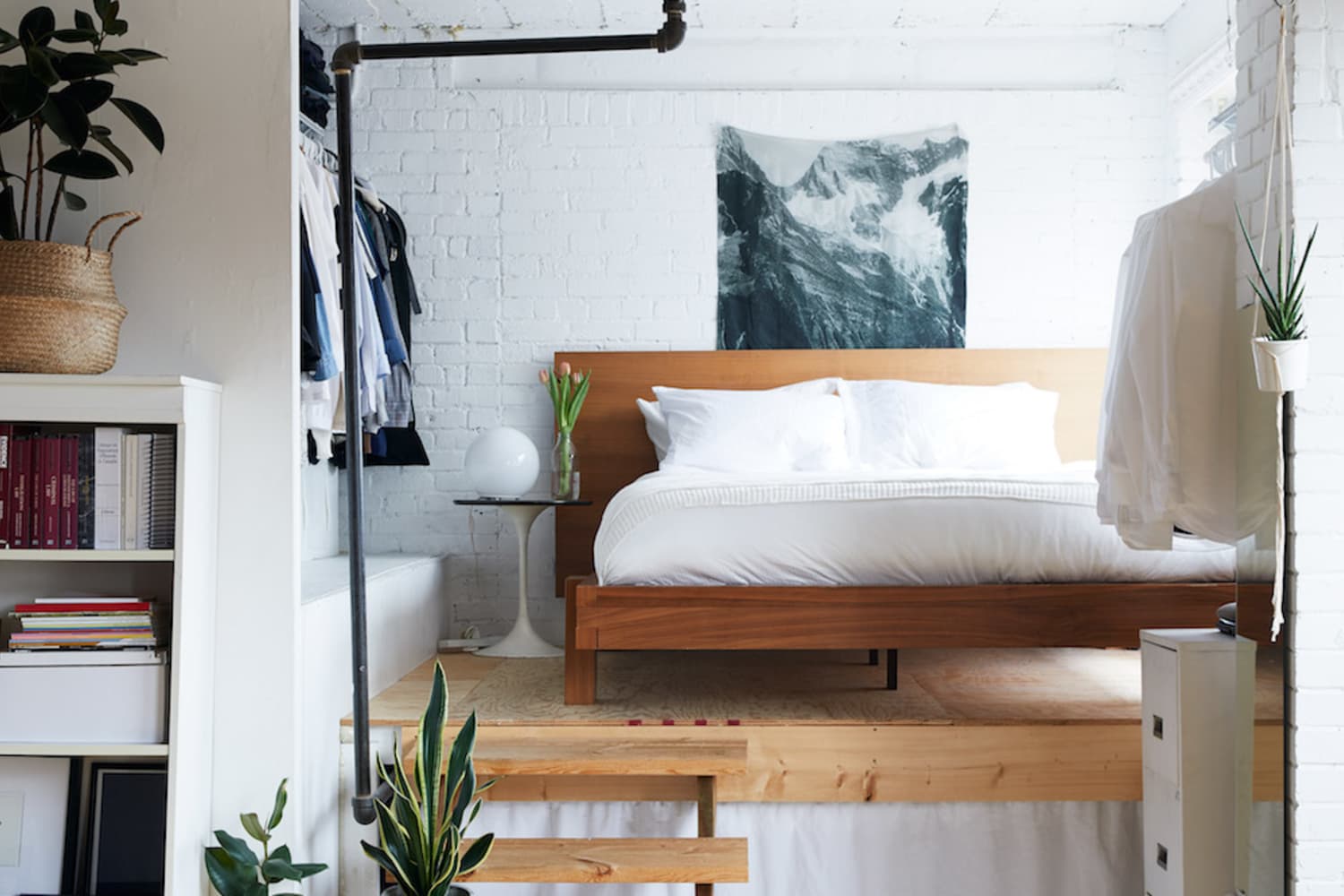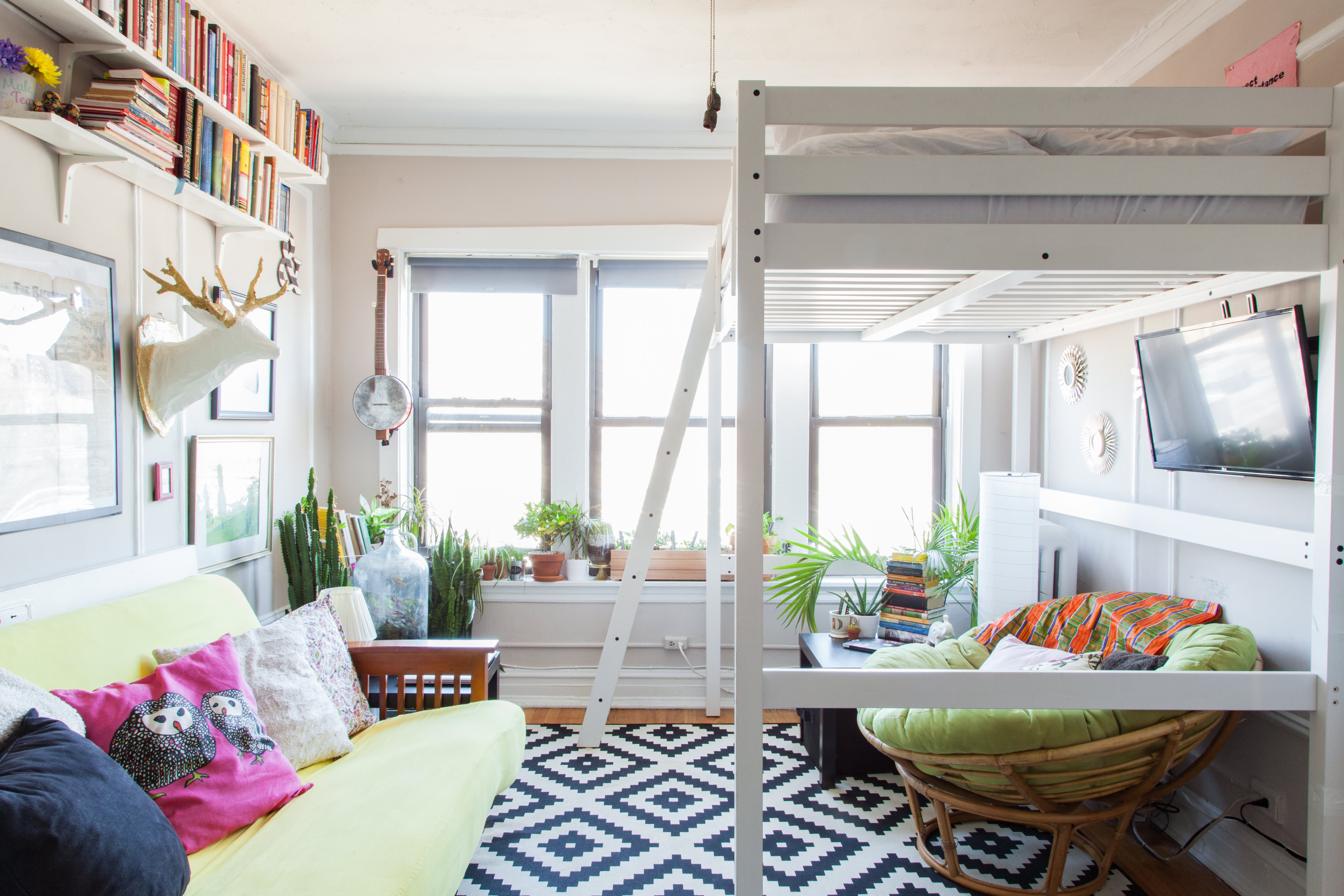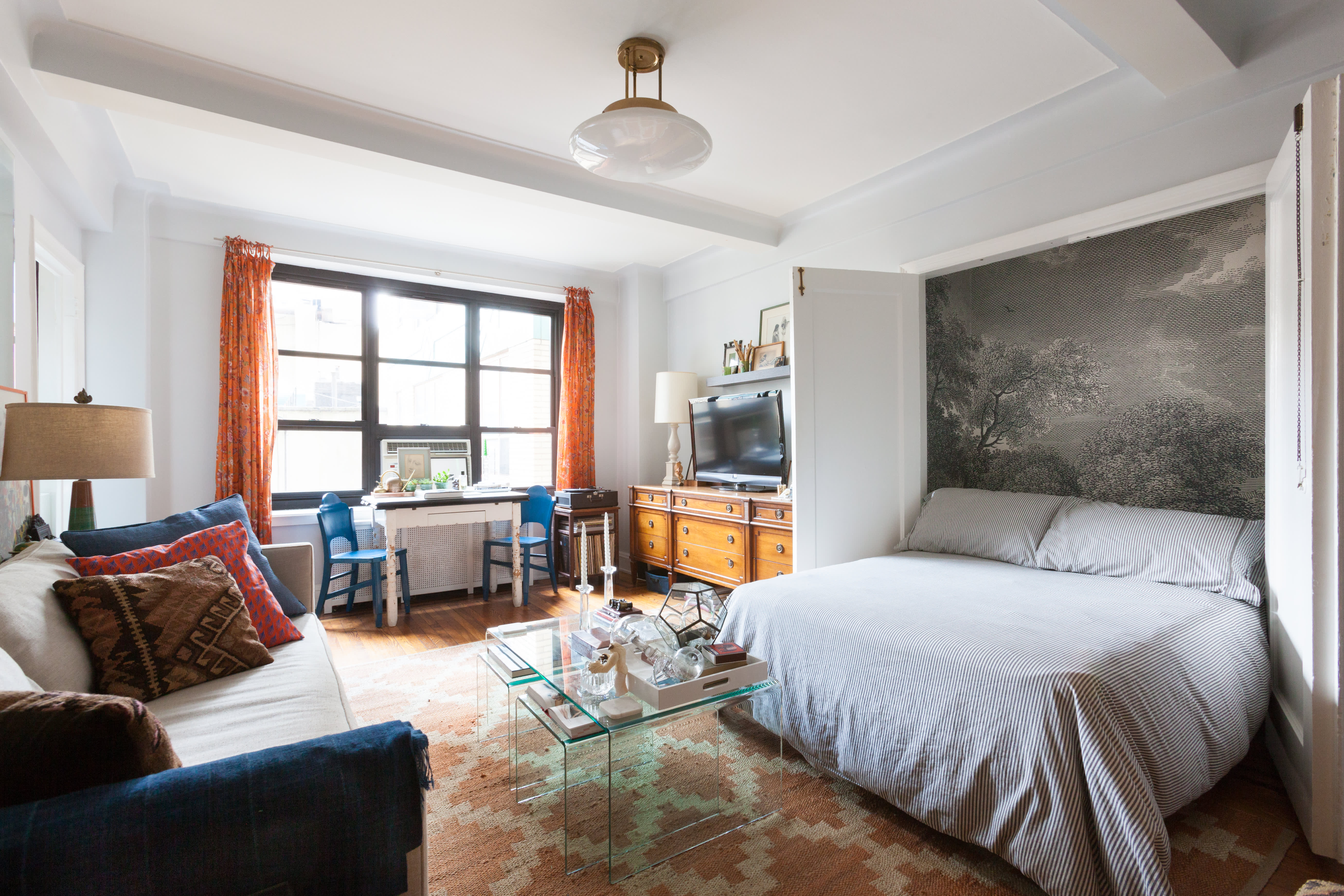Maximizing Space in a Small Bedroom
A small bedroom can be a challenge to decorate, but it’s definitely possible to create a functional and stylish space. The key is to maximize every inch of space and choose furniture and decor that are both practical and visually appealing.
Essential Furniture for Small Bedrooms
Choosing the right furniture is crucial for maximizing space in a small bedroom. Here are some essential pieces that prioritize functionality and space-saving designs:
- Platform Bed: A platform bed with built-in storage or a bed frame with drawers underneath provides ample storage space for bedding, clothes, or other items.
- Multifunctional Furniture: Look for pieces that serve multiple purposes, such as a storage ottoman that doubles as a seating area or a desk that folds down when not in use.
- Vertical Storage: Maximize vertical space with tall bookcases, shelves, or wall-mounted organizers. This helps to keep items off the floor and frees up valuable floor space.
- Floating Shelves: Floating shelves add storage and visual interest without taking up valuable floor space.
- Mirror: A strategically placed mirror can create the illusion of more space by reflecting light and expanding the visual area.
Organizing and Decluttering a Small Bedroom
A well-organized bedroom is essential for creating a sense of calm and maximizing space. Here are some tips for decluttering and organizing your small bedroom:
- Purge Unnecessary Items: Get rid of anything you don’t use or love. Donate, sell, or discard items that are taking up valuable space.
- Vertical Storage: Utilize vertical space with shelves, drawers, and wall-mounted organizers to store items off the floor.
- Under-Bed Storage: Use under-bed storage bins or drawers to store out-of-season clothes, linens, or other items.
- Over-the-Door Organizers: Over-the-door organizers are great for storing shoes, accessories, or other small items.
- Wall-Mounted Storage: Wall-mounted hooks, shelves, or baskets can be used to store hats, scarves, bags, or other items.
Small Bedroom Layout Design
A well-designed layout is essential for maximizing functionality and visual appeal in a small bedroom. Consider these factors:
- Natural Light: Position the bed and other furniture to maximize natural light. This creates a brighter and more spacious feeling.
- Traffic Flow: Ensure there is enough space to move around comfortably. Avoid placing furniture in the middle of the room or blocking doorways.
- Furniture Placement: Place the bed against the wall to maximize floor space. Use smaller furniture pieces and arrange them strategically to create a cohesive and functional layout.
Small Bedroom Mood Board
- Minimalist Style: This style emphasizes clean lines, neutral colors, and a streamlined aesthetic. A minimalist bedroom would feature a platform bed with minimal embellishments, a simple desk, and a few strategically placed decorative elements.
- Bohemian Style: This style is characterized by a mix of patterns, textures, and colors. A bohemian bedroom might feature a canopy bed, patterned rugs, macrame wall hangings, and vibrant throw pillows.
- Scandinavian Style: This style is known for its simplicity, functionality, and use of natural materials. A Scandinavian bedroom would feature a light and airy color palette, a wooden bed frame, and a few well-chosen decorative elements.
Smart Design Ideas for Small Bedrooms

Transforming a small bedroom into a haven of comfort and functionality requires clever design strategies. By maximizing space and incorporating smart design elements, you can create a visually appealing and practical retreat.
Using Mirrors to Create the Illusion of Space
Mirrors are a powerful tool for visually expanding a small bedroom. By strategically placing mirrors, you can reflect light and create the illusion of depth, making the room appear larger. Mirrors strategically placed on walls opposite windows can amplify natural light, making the space feel brighter and more spacious. A large mirror placed on a wall can create a sense of openness and make the room feel less confined.
Using Color and Lighting to Visually Expand a Small Bedroom
Color plays a crucial role in shaping the perception of space. Light colors, such as white, cream, and pale blues, can make a small bedroom feel larger and airier. Light colors reflect light, creating a sense of openness. Dark colors, on the other hand, can make a room feel smaller and more enclosed.
Strategic lighting is another key element in visually expanding a small bedroom. Proper lighting can highlight key features and create a sense of depth. Using a combination of ambient, task, and accent lighting can create a balanced and inviting atmosphere. Ambient lighting, such as overhead fixtures, provides general illumination. Task lighting, such as desk lamps, provides focused light for specific activities. Accent lighting, such as wall sconces or under-cabinet lights, can highlight specific features and add visual interest.
Creative Storage Solutions for Small Bedrooms
Maximizing storage space is essential in a small bedroom. Utilizing wall space, under-bed storage, and multi-functional furniture can help create a clutter-free environment.
- Wall Space: Utilize wall space with shelves, floating cabinets, and wall-mounted organizers. This frees up floor space and creates vertical storage solutions.
- Under-Bed Storage: Maximize under-bed space with storage bins, drawers, or a platform bed with built-in storage. This provides a hidden storage area for seasonal items, extra bedding, or other belongings.
- Multi-Functional Furniture: Choose furniture that serves multiple purposes. A storage ottoman can double as a seating option and provide extra storage space. A Murphy bed can transform from a bed to a desk or a sofa, maximizing space during the day.
Incorporating Vertical Space into a Small Bedroom Design
Vertical space is often overlooked in small bedroom design. By incorporating shelves, wall-mounted organizers, and hanging storage solutions, you can create additional storage without sacrificing valuable floor space.
- Shelves: Install open shelves above the bed, desk, or dresser to display books, decorative items, or other belongings. This adds visual interest and provides convenient storage.
- Wall-Mounted Organizers: Wall-mounted organizers, such as pegboards or over-the-door organizers, can be used to store clothes, accessories, or other items. This frees up valuable floor space and keeps belongings organized.
- Hanging Storage Solutions: Hanging storage solutions, such as hanging organizers or shoe racks, can be used to store clothes, shoes, or other items. This creates vertical storage and keeps belongings off the floor.
Successful Small Bedroom Design Projects, Apartment therapy small bedroom
- A small bedroom in a New York City apartment was transformed into a functional and stylish space by using a Murphy bed, built-in shelves, and a mirrored wall. The Murphy bed provides a comfortable sleeping space that folds away during the day, freeing up floor space. The built-in shelves offer ample storage for books, clothes, and other belongings. The mirrored wall reflects light and creates the illusion of a larger space.
- A small bedroom in a London flat was redesigned to create a cozy and efficient space. The room features a platform bed with built-in storage, a small desk with a built-in bookshelf, and a mirrored closet door. The platform bed provides ample storage space for bedding and other items, while the desk offers a dedicated workspace. The mirrored closet door reflects light and makes the room feel more spacious.
Creating a Functional and Stylish Small Bedroom: Apartment Therapy Small Bedroom

A small bedroom can be a haven of comfort and style if you approach its design with a focus on maximizing space and creating a welcoming ambiance. By combining functionality with aesthetic appeal, you can transform your small bedroom into a sanctuary that reflects your personal style and meets your needs.
Balancing Functionality with Style
A small bedroom presents unique design challenges, but it also offers an opportunity to be creative and resourceful. The key is to create a space that serves your practical needs while also expressing your personal taste. This can be achieved by strategically planning the layout, choosing multi-functional furniture, and incorporating thoughtful storage solutions.
- Prioritize Functionality: Begin by assessing your needs. What activities do you typically perform in your bedroom? Do you need a workspace, a reading nook, or a place to relax and unwind? Identifying your priorities will guide your design decisions.
- Maximize Space: Use every inch wisely. Utilize vertical space with tall shelves, floating shelves, and storage ottomans. Consider a bed frame with built-in drawers or a headboard with integrated storage compartments.
- Multi-Functional Furniture: Invest in furniture that serves multiple purposes. A convertible sofa bed can double as a seating area and a sleeping space. A storage ottoman can provide seating and extra storage. A desk with a built-in bookshelf can combine work and storage needs.
- Strategic Layout: Plan the layout to maximize flow and minimize clutter. Position furniture strategically to create a sense of spaciousness. Use mirrors to reflect light and create an illusion of more space.
Apartment therapy small bedroom – Apartment therapy often champions the art of maximizing small spaces, transforming cramped bedrooms into havens of calm. A navy blue Scandinavian bedroom, like the one featured in this serene retreat , demonstrates how a bold color choice can anchor a room while still retaining a sense of airiness.
This minimalist aesthetic, with its clean lines and natural materials, can be easily adapted to even the smallest of spaces, proving that beauty can indeed be found in constraint.
Apartment therapy for small bedrooms often revolves around maximizing space and creating a sense of calm. A small round table, like the ones found here , can be a beautiful addition to a small bedroom, serving as a place to enjoy a cup of coffee or read a book, without taking up too much valuable floor space.
The round shape helps to soften the corners of the room, creating a more inviting atmosphere.

